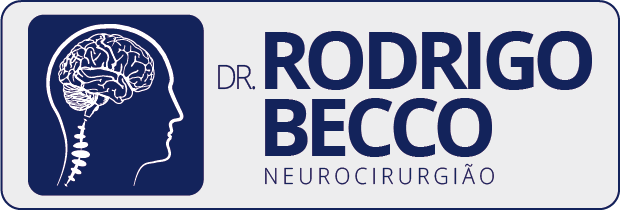Role of the emergency extra-intracranial bypass in acute occlusive arterial disease: evidence in the literature as to the benefit to young patients and an illustrative case of a patient with extra- and intracranial traumatic internal carotid artery occlusion
* Juan Antonio Castro-Flores 1, Carlos Eduardo Roelke 2, Luis Fernando Falcão 3, Rodrigo Becco de Souza 4, Tae Yoon Moon 5, Raimundo Santos 6, Guilherme Brasileiro de Aguiar 7, Bruno Nóbrega 8
Hospital São Camilo (Santana), Hospital das Clínicas da Faculdade de Medicina da Universidade de São Paulo (HCFMUSP), Escola Paulista de Medicina da Universidade Federal de São Paulo (Unifesp/EPM) e da Irmandade da Santa Casa de Misericórdia de São Paulo (ISCMSP), São Paulo, SP, Brasil.
Abstract. The extra-intracranial bypass has been used in the treatment of patients with chronic cerebrovascular insufficiency. More recent studies have demonstrated the benefit of this technique to patients with arterial occlusion in the acute phase. We relate the case of a 19-year-old patient, victim of cervical trauma, who presented evidence of intra- and extracranial internal carotid artery (ICA) occlusion and progressive intra hospital clinical worsening. He underwent a high-flow bypass surgery with NIHSS at 17, progressing with progressive intra hospital improvement and in the outpatient segment achieved a NIHSS of 2 in 6 months of follow-up. We discuss the role of high- and low-flow bypass in chronic occlusive arterial disease, based on a review of the literature. We conclude that in spite of there being a divergence as to the indication for, and benefits of, these techniques in chronic occlusive arterial disease, in the acute phase, there appears to be a more evident benefit mainly in the young patients, whose etiology is the dissection of the ICA.
Keywords. Brain, cerebral revascularization, stroke, aneurism dissecting.

Resumo
Anastomose extraintracraniana de emergência na doença arterial oclusiva aguda: evidências na literatura quanto ao benefício para pacientes jovens e caso ilustrativo de um paciente com oclusão traumática da artéria carótida interna. A anastomose extraintracraniana tem sido utilizada no tratamento de pacientes com insuficiência vascular cerebral crônica. Estudos mais recentes têm demonstrado os benefícios dessa técnica para pacientes com doença arterial oclusiva em sua fase aguda. Relatamos o caso de um jovem de 19 anos, vítima de trauma cervical fechado, que apresentou oclusão da artéria carótida interna (ACI) extra e intracraniana, evoluindo com piora neurológica progressiva. Foi submetido a anastomose de alto fluxo em fase aguda, evoluindo com melhora neurológica, progredindo de um NIHSS de 17 para NIHSS de 2 no seguimento após seis meses. Discutimos, ainda, o papel da anastomose de alto e baixo fluxo na doença arterial oclusiva crônica, com base em revisão da literatura. Concluímos que, embora haja divergência na indicação e nos possíveis benefícios, as técnicas de anastomoses podem proporcionar maior benefício para pacientes jovens, cuja principal etiologia é a dissecção arterial.
Palavras-chave
Encéfalo, revascularização cerebral, acidente vascular cerebral, aneurisma dissecante.
Introduction
The extra-intracranial bypass has been used in the treatment of patients with chronic cerebrovascular insufficiency for whom medicative treatment was not effective.1,2 These patients have a borderline cerebral blood flow and present transitory ischemic attacks (TIA) or strokes at the risk sites when submitted to greater hemodynamic stress.1,2 The efficacy of revascularization in this population remains controversial, in spite of the good surgical results.1,3-5 Thus, even with a low rate of neurosurgical complications and a high rate of patency in the bypasses implanted, the groups submitted solely to clinical treatment progress with ischemic events rates statistically similar to those of the surgical groups. For this reason, there is a necessity for better studies to establish the indication of this procedure for patients with chronic arterial insufficiency.6
There are reports in the literature of stroke treatment in the acute phase with low-flow bypass,2,7 as well as with high-flow.7,8 The two studies demonstrate excellent results during the follow-up, constituting a good indication for both surgical techniques. We report on a case, illustrated with radiological and intraoperative images, in which a high-flow bypass was performed in the acute phase of an ischemic event in a patient who was the victim of carotid traumatic dissection. We also made a review of the literature on the utilization of high- and low-flow bypass in the treatment of ischemic stroke.
Dr. Rodrigo Becco
Médico neurocirurgião graduado pela Universidade de São Paulo (USP), em 2007. Residente em Neurocirurgia pela Santa Casa de São Paulo, em 2014. Mestre pelo Instituto de Assistência Médica do Servidor Público Estadual, em 2015. Membro da Sociedade Brasileira de Neurocirurgia desde 2014.

